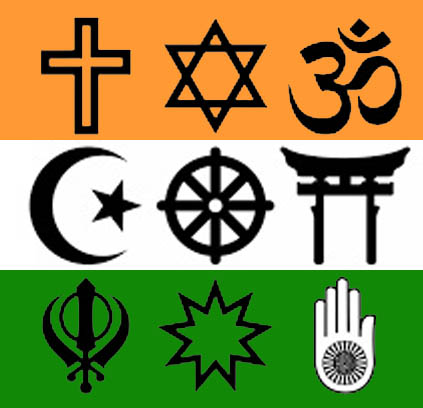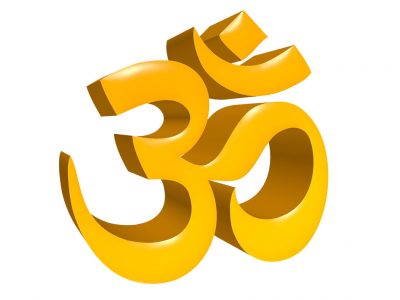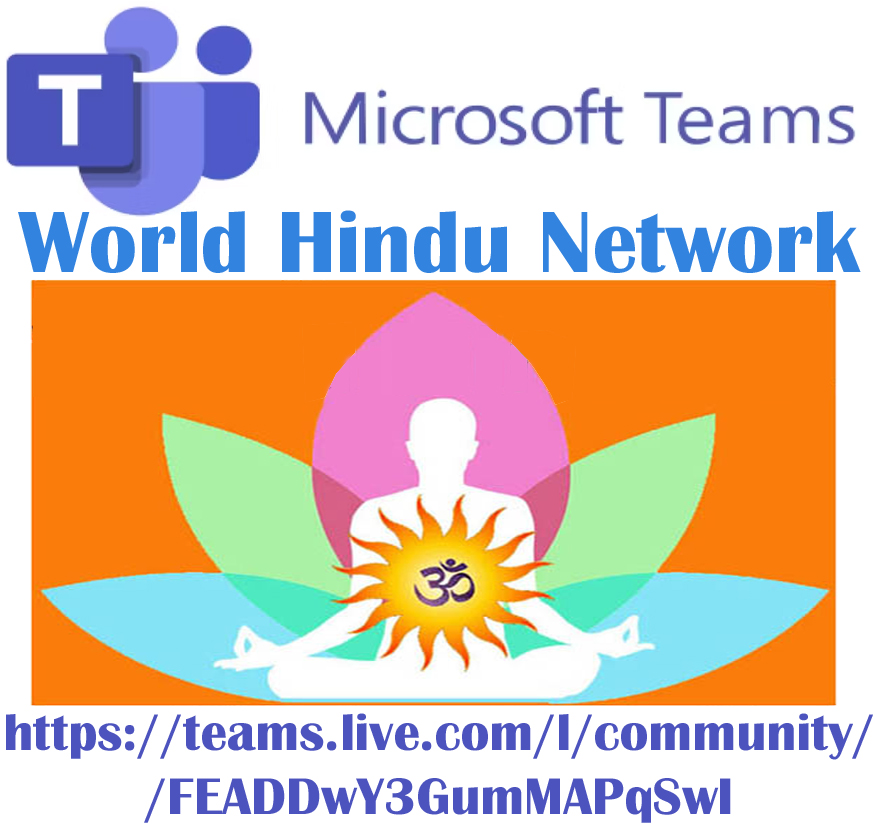.
CONTENTS:
01. Festival
02. When is Shivaraathri
03. Muhurath
04. Rituals
05. Puja
06. Celebrations
07. Regional Celebrations
08. Celebrations around the World
09. Shivaraathri Fast
10. Significance
11. Masik Shivaraathri
12. Sawan Shivaraathri
13. Puja Vidhi
14. Marriage of Shiva and Shakthi
15. Samudra Manthan
16. Legend of Shiva Linga
17. Legend of Lubdhaka
18. Legend of Ganga
19. Important of Bilva Patra
20. Lord Shiva’s Assurance
21. 108 Names of Maa Paarvathi
22. Dos and Don’ts on Mahashivaraathri.
Mahashivaraathri Festival is celebrated with devotion and religious fervor on the moonless 14th night of the new moon in the Hindu month of Phalgun. Devotees observe fast all through the day and night of Shivaraathri in honor of Lord Shiva and pay a visit to Shiva temples. Ritual bath of Shiva Lingam with milk, water, honey etc is also performed by the devotees as a part of the tradition. Many believe that Shivaraathri Festival marks the wedding day of Lord Shiva and Paarvathi. However, according to some legends, it was on the auspicious night of Shivaraathri that Lord Shiva performed the ‘Tandava’, the dance of the primal creation, preservation and destruction.
Join us on World Hindu & Health Instruction (@WorldHinduHealth)
1. Festival
Mahashivaraathri Festival or the ‘The Night of Shiva’ is celebrated with devotion and religious fervor in honor of Lord Shiva, one of the deities of Hindu Trinity. Shivaraathri falls on the moonless 14th night of the new moon in the Hindu month of Phalgun, which corresponds to the month of February – March in English Calendar. Celebrating the festival of Shivaraathri devotees observe day and night fast and perform ritual worship of Shiva Lingam to appease Lord Shiva.
Legends:
There are various interesting legends related to the festival of Maha Shivaraathri. According to one of the most popular legends, Shivaraathri marks the wedding day of Lord Shiva and Paarvathi. Some believe that it was on the auspicious night of Shivaraathri that Lord Shiva performed the ‘Tandava’, the dance of the primal creation, preservation and destruction. Another popular Shivraathri legend stated in Linga Purana states that it was on Shivaraathri that Lord Shiva manifested himself in the form of a Linga. Hence the day is considered to be extremely auspicious by Shiva devotees and they celebrate it as Mahashivaraathri – the grand night of Shiva.
Traditions and Customs of Shivaraathri
Various traditions and customs related to Shivaraathri Festival are dutifully followed by the worshippers of Lord Shiva. Devotees observe strict fast in honor of Shiva, though many go on a diet of fruits and milk some do not consume even a drop of water. Devotees strongly believe that sincere worship of Lord Shiva on the auspicious day of Shivaraathri, absolves a person of sins and liberates him from the cycle of birth and death. Shivaraathri is considered especially auspicious for women. While married women pray for the well being of their husbands unmarried women pray for a husband like Lord Shiva, who is regarded as the ideal husband.
To mark the Shivraathri festival, devotees wake up early and take a ritual bath, preferably in river Ganga. After wearing fresh new clothes devotees visit the nearest Shiva temple to give ritual bath to the Shiva Lingam with milk, honey, water etc.
On Shivaraathri, worship of Lord Shiva continues all through the day and night. Every three hours priests perform ritual puja of Shivalingam by bathing it with milk, yogurt, honey, ghee, sugar and water amidst the chanting of “ Om Namah Shivaya’ and ringing of temple bells. Nightlong vigil or Jaagran is also observed in Shiva temples where large number of devotees spend the night singing hymns and devotional songs in praise of Lord Shiva. It is only on the following morning that devotee break their fast by partaking prasadam offered to the deity.
Contd…
Telegram provides unlimited cloud storage. This means all your text messages, images media files & documents will be saved on their cloud without losing any data, you don’t need to worry about backup & restore. Telegram Private Groups cannot be found with an in-app search. The group is private, after all that you can use the 2,00,000 member limit fully. Telegram Channels are a tool for broadcasting public (or) private messages to large audiences, similarly as you do on Twitter or Facebook Page. In fact, channels can have an unlimited number of subscribers. Telegram Private Channels cannot be found with an in-app search. Group video calls on Telegram allow 30 users to broadcast from their camera as well as their screens. This can now be watched by 1,000 people at once (updated by 1st August 2021). Users can hold anything event online, from lectures to concerts and everything in between, similarly as Zoom or Microsoft Teams or Google Meet.
Join Us
| Telegram Channel | Twitter | LinkedIn Page | Microsoft Teams | Other Social | WhatsApp Channel | Blogger |
Join us on World Hindu & Health Instruction (@WorldHinduHealth)
2. When is Shivaraathri?
Shivaraathri 2024 is on 8th March, Friday
Auspicious festival of Mahashivaraathri falls on the 4th night of the new moon during Krishna Paksha in the Hindu month of Phalgun. The Sanskrit term, Krishna Paksha means the period of waning moon or the dark fortnight and Phalguna corresponds to the month of February – March in English Calendar. Shivaraathri Festival is celebrated on a moonless night.
According to Hindu mythology, Shivaraathri or ‘Shiva’s Great Night’ symbolises the wedding day of Lord Shiva and Paarvathi. Many however, believe, Shivaraathri is the night when Lord Shiva performed the Tandava Nritya – the dance of primordial creation, preservation and destruction. Celebrating the festival in a customary manner, devotees give a ritual bath to the Lingam with the panchagavya – milk, sour milk, urine, butter and dung. Celebrations of Shivaraathri Festival mainly take place at night. Devotees of Lord Shiva throng Shiva temples across the country and spend ‘the Night of Lord Shiva’ by chanting verses and hymns in praise of the Lord. The festival holds special meaning for the ladies. They pray to Goddess Paarvathi also called ′Gaura′, the giver of ′suhag′ for good husbands, marital bliss and a long and prosperous married life.
Shivaraathri Calendar
2020: 21st February, Friday
2019: 4th March, Monday
2018: 13th February, Tuesday
2017: 24th February, Friday
2016: 7th March, Monday
2015: 17th February, Tuesday
2014: 27th February, Thursday
2013: 10th March, Sunday
2012: 20th February, Monday
2011: 2nd March, Wednesday
2010: 12th February, Friday
2009: 23rd February, Monday
2008: 6th March, Thursday
2007: 16th February, Friday
2006: 26th February, Sunday
2005: 8th March, Tuesday
2004: 18th February, Wednesday
2003: 1st March, Saturday
2002: 12th March, Tuesday
2001: 21st February, Wednesday
2000: 4th March, Saturday
1999: 14th February, Sunday
A. Simple: Telegram is so simple you already know how to use it.
B. Private: Telegram messages are heavily encrypted and can self-destruct.
C. Synced: Telegram lets you access your chats from multiple devices.
D. Fast: Telegram delivers messages faster than any other application such WhatsApp, Signal etc.
E. Powerful: Telegram has no limits on the size of your media and chats.
F. Open: Telegram has an open API and source code free for everyone.
G. Secure: Telegram keeps your messages safe from hacker attacks.
H. Expressive: Telegram lets you completely customise your messenger.
Join Us
| Telegram Channel | Twitter | LinkedIn Page | Microsoft Teams | Other Social | WhatsApp Channel | Blogger |
Maha Shivaraathri is one of the most admired festivals of Lord Shiva when devotees thank the reservoir of power Lord Shiva for the strength and courage that he has bestowed upon all these years. People celebrate this day with extreme joy and devotion remembering the life of Lord Shiva. People around the country keep fast on this day to show their respect and gratitude to the Devo Ke Dev Mahadev.
Every Year the way Puja is done and fasting has been done has changed. This festival particularly holds importance for women across the country as it is believed that revering Lord Shiva. To show their sincerity and devotion many keep fast without taking even a drop of water and some keep fast with eating fruits.
The festival is observed on new moon’s 14th day in the month of February or March and the day is moonless. In 2018 it is falling on 13th of February. Every Year the Muhurath and timing of Puja is different as described by astrologers. Here is the auspicious Muhurath for Maha Shivaraathri in this year:
Chaturdashi Tithi Begins: 8th March 2024
Contd…
Join Us
| Telegram Channel | Twitter | LinkedIn Page | Microsoft Teams | Other Social | WhatsApp Channel | Blogger |
4. Shivaraathri Rituals
Devotees of Lord Shiva observe the Shivaraathri Festival by following the prescribed rituals with sincerity and devotion. All through the day, devotees abstain from eating food and break their fast only the next morning, after the nightlong worship. Ritual baths of Shivalinga in the numerous Shiva temples by Shiva worshipper, mainly women, is another significant feature of Shivraathri customs and traditions. Devotees strongly believe that ritual worship of Lord Shiva on the auspicious day of Shivaraathri absolves them of past sins and they are blessed with Moksha.
Rituals Observed on a Shivaraathri Morning
As a tradition devotees wake up early in the morning of the Mahashivraathri day and take a ritual sunrise bath, preferably in the holy waters of river Ganga. They also offer prayers to the Sun God, Vishnu and Shiva as a part of a purification rite observed on all-important Hindu festivals. After wearing fresh new clothes devotees visit the nearest Shiva Temple to give the customary bath to the Shivalinga.
On a Shivraathri day, Shiva temples are thronged by devotees, mainly women, who come to perform the traditional Shivalinga puja and seek blessings from the god. At times there is so much rush in the temples that devotees have to wait for their turn to observe puja. At their turn for worship, devotees circumambulate the Shivalinga, three or seven times, and then pour water over it. Some also pour milk. Sounds of bell and shouts of ‘Shankarji ki Jai’ or (Hail Shiva) reverberate in the temple premises.
Join us on World Hindu & Health Instruction (@WorldHinduHealth)
Ritual Bath of Shivalinga
Following the rituals prescribed in the Shiva Purana, every three hours, Shivalingam is given a special bath with milk, yogurt, honey, sandalwood paste and rose water. Puja, meditation and chanting of ‘Om Namah Shivaya’ accompany the ritual bath. Following the bath, vermilion paste is applied on the linga. Traditionally, leaves of a forest tree Aegle marmelos (bilwa, maredu, wood apple) are used for Shiva puja. Thereafter, Bilwa leaves, which have to be a stalk with three leaves, is kept on top of the Shivalinga. Ber or jujube fruit is a special offering to the god on this day. Beetle leaves are also offered by some. Some also offer bilwa leaves in the belief that the Goddess Lakshmi resides in them. Others believe it is offered for its cooling effects on the hot-tempered deity. Many devotees also decorate the linga with flowers and garlands and offer incense sticks and fruit.
Significance of Puja Items
- According to the Shiva Purana, there is a special significance of the six essential puja items used in the Shiva worship.
- Bathing of Shivalinga with water, milk and honey and wood apple or bel leaves added to it, represents purification of the soul.
- The vermilion paste applied on the linga after the ritual bath represents virtue.
- Offering of fruits symbolises longevity and gratification of desires.
- Burning of incense sticks yields wealth.
- The lighting of the lamp symbolises attainment of knowledge.
- Offering of betel leaves marks satisfaction with worldly pleasures.
Join us on World Hindu & Health Instruction (@WorldHinduHealth)
Contd…
Join Us
| Telegram Channel | Twitter | LinkedIn Page | Microsoft Teams | Other Social | WhatsApp Channel | Blogger |
5. Shivaraathri Puja
Shivaraathri Puja has been given tremendous significance in Hindu mythology. It is said that ritual worship of Lord Shiva on a Shivaraathri day pleases Lord Shiva the most. Devotees further believe that by pleasing Lord Shankara on the auspicious Shivaraathri day, a person is absolved of past sins and is blessed with Moksha or salvation.
Merits of Shivaraathri Puja
According to Shiva Purana, sincere worship of Lord Shiva yields merits including spiritual growth for the devotees. It also provides extensive details on the right way to perform Shivraathri Puja.
Shiva Purana further says that performing abhisheka of Shivalinga with six different dravyas including milk, yogurt, honey, ghee, sugar and water while chanting Sri Rudram, Chamakam and Dasa Shanthi pleases Lord Shiva the most. According to the mythology, each of these dravya used in the abhisheka blesses a unique quality:
- Milk is for the blessing of purity and piousness.
- Yogurt is for prosperity and progeny.
- Honey is for sweet speech.
- Ghee is for victory.
- Sugar is for happiness.
- Water is for purity.
Besides, worship of Lord Shiva on Shivraathri is also considered to be extremely beneficial for women. While, married women pray to Shiva for the well being of their husbands and sons, unmarried women pray for a husband like Shiva, who is considered to be the ideal husband.
Getting Ready for Shivraathri Puja
To perform the worship of Lord Shiva on Shivraathri, devotees wake up early and take a ritual bath, preferably in the holy waters of river Ganga. This is followed by worship to Sun God, Vishnu and Shiva in accordance with the purification rite observed on all-important Hindu festivals. Devotees then wear fresh new clothes and pay a visit to the nearest Shiva temple. As a tradition, devotees observe a fast on a Shivaraathri day. Some do not consume even a drop of water.
Performing Maha Shivaraathri Puja
Following the method prescribed in Shiva Purana, priests perform ritual puja of Shiva Linga every three hours all through the day and night of Shivaraathri Festival. During this puja, chants of Om Namah Shivaya and sounds of bells reverberate in the temple. Following the bath with milk, yogurt, honey, ghee, sugar and water that helps in the purification of the soul a vermilion paste is applied on the Linga as it represents virtue. These six items form an indispensable part of Shivaraathri, be it a simple ceremony at home or grand temple worship
After this, Bilwa leaves, which have to be a stalk with three leaves, is kept on top of the Shivalinga to cool the hot-tempered deity. Ber or jujube fruit is also offered to Lord Shiva, as it is symbolic of longevity and gratification of desires. Some devotees also offer the auspicious betel leaves to Lord Shiva marking satisfaction with worldly pleasures. Garlanding of Linga with flowers and garlands is also a part of the ritual Shivaraathri Puja. Devotees also burn incense sticks as is said to yield wealth. Many also light lamps to symbolise attainment of knowledge. It is said that by offering water, hugging the Linga, lighting the diya and incense andringing the temple bells, devotees call into focus all their senses, making them acutely aware of themselves and the universe to which they belong.
This ritual worship of Lord Shiva continues through the day and night of Shivaraathri. Devotees stay awake and spent the night in Shiva temples by chanting ‘Om Namah Shivaya’ and singing hymns and verses in praise of Lord Shankar. Devotees observing vrat on Shivaraathri break it only the next morning by partaking prasadam offered to Lord Shiva.
Contd…

Join Us
| Telegram Channel | Twitter | LinkedIn Page | Microsoft Teams | Other Social | WhatsApp Channel | Blogger |
6. Shivaraathri Celebrations
Shivaraathri Celebrations in India are marked with devotion and religious fervor. Joy is writ large on the faces of millions of Lord Shiva devotees as they start preparing for the biggest Lord Shiva festival in advance. Celebrations of Shivaraathri began with the break of the dawn on the Shivraathri day and continue all though the night. Devotees observe fast and spend the day in devotion and worship of Lord Shiva. Many worshippers also participate in the Jaagran or the night vigil organised in various Shiva temples across the country. Devotees believe that sincere observance of Shivaraathri puja and all night worship of Lord Shiva will absolve them of all their sins and liberate them from the cycle of birth and death.
Shivaraathri Celebrations in Temples
After the ritual bath, preferably in the sacred waters of river Ganga, devotees pay a visit to the nearest Lord Shiva temple carrying the traditional puja items like milk, water, bel leaves, fruits, incense stick, oil lamp etc. Due to massive popularity of the festival several stalls selling puja items come up outside the temple and do a thriving business.
In the bigger and more popular Shiva temples there is massive rush of devotees. Long queues can be noticed as devotees, mostly women, wait for their turn to perform puja. Since, bathing of Shiva Linga with milk is part of the Shivaraathri Puja tradition; little rivers are formed due to the excessively overflowing milk and fruit in the Shiva temples on this day.
Ritual worship of Shiva Linga is done by temple priests every three hours all through the day and night of Shivaraathri Festival. Shouts of ‘Shivaji ki Jai’, chanting of the mantra, ‘Om Namah Shivaya’ and ringing of temple bells make the atmosphere religious and devotional.
Nightlong vigil on Shivraathri or the Jaagran is celebrated by singing of devotional hymns and songs in worship of Lord Shiva. And, it is only in the following morning that the devotees break their fast by consuming prasadam offered to the Lord.
Shivaraathri Celebrations by Women
Shivraathri Festival is particularly awaited by Hindu women. On Shivaraathri, married and unmarried women perform puja with great faith, as Goddess Paarvathi who is also called ′Gaura′, is regarded as the giver of ′suhag′ – good husbands, marital bliss and a long and prosperous married life. One can therefore see find women enthusiastically observing the fast and performing the rituals Shiva Pujas on the day.
Tradition of Drinking Thandai
Since Lord Shiva is regarded as an ascetic god, Maha Shivraathri is very popular with ascetics. Thandai, a drink made with bhang (cannabis), almonds, and milk, is essentially drunk by the devout on the day as cannabis is said to have been very dear to Shiva.
Contd…
Telegram
Telegram is one of the World Famous Social Networking Site & App and Social Media Chat Messaging, one of the Strongest competitor and Whole Feature powerful.

Telegram is better than WhatsApp, Google Hangouts, BlackBerry Messenger, Hike Messenger, Facebook Messenger.
Join Us
| Telegram Channel | Twitter | LinkedIn Page | Microsoft Teams | Other Social | WhatsApp Channel | Blogger |
7. Regional Celebrations of Shivaraathri
The auspicious festival of Maha Shivaraathri is celebrated with devotion and religious fervor all over India and even beyond. Though fasting and worship of Shiva Linga with a ritual bath remain the common feature of Shivaraathri celebrations at all places, minor variations due to regional difference can be observed in some states.
Please read on to know more about regional celebrations of Shivraathri. You will be surprised to know, about the various interesting traditions and customs of Shivraathri Festival and the zeal with which devotee of Lord Shiva follow them.
Shivaraathri Celebrations in Various States of India
- Andhra Pradesh
- Assam
- Himachal Pradesh
- Jammu and Kashmir
- Karnataka
- Madhya Pradesh
- Odisha
- West Bengal
Shivaraathri Celebrations around the World
- Mauritius
- Nepal
Andhra Pradesh
Sri Kalahasteeshwara Temple, Andhra Pradesh
Festival of Shivaraathri is observed with extreme enthusiasm in the state of Andhra Pradesh. Devotees throng the various important Shiva temples in the state mainly Sri Kalahasteeshwara Temple at Kalahasthi in Chiththur district and the Bharamarambha Malikarjunaswamy Temple at Srisailam. Devotees also observe fast and chant mantras in honor of Lord Shiva to mark the auspicious festival.
Sri Kalahasteeshwara Temple, Andhra Pradesh
Join us on World Hindu & Health Instruction (@WorldHinduHealth) and Wonders of Indian Famous (@WondersofIndianFamous) in Facebook Page
Krishna River, Srisailam
Join us on World Hindu & Health Instruction (@WorldHinduHealth) and Wonders of Indian Famous (@WondersofIndianFamous) in Facebook Page
Bharamarambha Malikarjunaswamy Temple at Srisailam
Join us on World Hindu & Health Instruction (@WorldHinduHealth)
Assam
In the North-Eastern state of Assam, the hub of Shivraathri celebrations is at the Umananda Temple, situated on the Peacock Island in the middle of Brahmaputra river in Guwahati, the capital of Assam. Thousands of Shiva devotees from all over the country pay a visit to the temple on the occasion of Shivaraathri. Sibsagar, the capital of the erstwhile Ahom kings, is the other major centre of Mahashivaraathri celebrations in Assam.
Umananda Temple on Peacock Island in the middle of Brahmaputra River in Guwahathi
Join us on World Hindu & Health Instruction (@WorldHinduHealth) and Wonders of Indian Famous (@WondersofIndianFamous) in Facebook Page
Himachal Pradesh
The Temple of Bhutnath at Mandi in Himachal Pradesh is said to host the biggest Shivaraathri Puja in the country. Every year on Shivraathri Festival, the Governor of the state leads a Shobha Yatra at a function inaugurated by the Chief Minister. The royal family of Mandi started the tradition some 500 years ago. An eight-day-long fair is also organised which witness the participation of artists from India and even beyond.
Bhutnath Temple at Mandi in Himachal Pradesh
Join us on World Hindu & Health Instruction (@WorldHinduHealth) and Wonders of Indian Famous (@WondersofIndianFamous) in Facebook Page
Jammu and Kashmir
Hindus of Kashmir observe Shivaraathri with utmost zeal and devotion. Here, Shivraathri is celebrated for three weeks or 21 days, beginning on the first day of the dark fortnight of Phalguna (locally known as hur ukdoh) and end on the 8th day of the bright half of Phalguna. Kashmiri Brahmins perform Shivaraathri puja on the 13th day of the dark half of Phalguna Krishna Paksha to mark Lord Shiva′s wedding with Uma, the beautiful daughter of the Himalayas. In keeping with their hospitable nature, Kashmiri Brahmins offer even non-vegetarian food in puja to entertain Bhairavas who are said to form the major part of Shiva′s baaraat.
Shivraathri puja in Jammu and Kashmir is performed in a very distinctive way. Two pots (called kalash), depicting Shiva and Paarvathi are filled with walnuts soaked in water. These walnuts are taken out only on the third day which usually falls on the no moon day or amavaasya. On the third day this walnut which is wet is distributed to all friends and neighbours as prasadam. On the chaturdashi (14th day after full moon) there is the real feasting when the families invite each other for dinners.
In Kashmir, Shivaraathri is also called Hayrath, which is the corrupt form of ‘hairat’, a Persian word meaning ′utter surprise′. The term was coined during the Pathan occupation of the valley. Besides, Shivaraathri puja is better known as Vatuk Puja in Kashmir where Vatuk means, collection or an assemblage of different objects. The name has been given because the main puja on Shivaraathri day involves collection of a large number of articles. The name could also be traced to the term Vatuk Dev, Lord Shiva′s celibate form. People in Kashmir also worship Vatuk Bhairav, said to be Shiva′s most trusted dwarpal (gatekeeper). This is done in a bid to seek his favor for an audience with the Lord. On Hayrath day the children are given money as a gift called “herat kharch”. Interestingly it is not only children who receive gifts, for even husbands give gifts to their wife and the elder brother gives to younger brother. On the next day there is also a tradition to play the game of “harr” which is played with the help of sea shells.
Join us on World Hindu & Health Instruction (@WorldHinduHealth) and Wonders of Indian Famous (@WondersofIndianFamous) in Facebook Page
Karnataka
Festival of Maha Shivaraathri is observed with pomp and enthusiasm in the southern state of Karnataka. A grand Sri Shidlingappa′s fair is observed to mark the auspicious occasion. Deity is taken to the river in a palanquin accompanied by drummers (Dollu and Majalu) from several neighboring and is then worshipped. Linagayats, people of the Shiva cult, worship Linga on Shivaraathri. Following a tradition, married women wear a linga made of silver or gold on their body. In southern Karnataka, children make believe that they are kings and dole out punishments to all and sundry. This particular tradition is based on the mythological legend related with Shivaraathri that narrates the story of Shiva punishing Brahma for lying about measuring the length of Linga.
Murudeshwar Temple, Karnataka
Join us on World Hindu & Health Instruction (@WorldHinduHealth) and Wonders of Indian Famous (@WondersofIndianFamous) in Facebook Page
Madhya Pradesh
Shivaraathri is celebrated with religious fervor in the state of Madhya Pradesh. As a tradition, people in Madhya Pradesh take a holy dip in Sagar tank in Khajuraho. The place houses a beautiful Shiva temple.
Bundelkhand Region, which has a stronghold of Shaivites hosts the biggest Shivaraathri celebrations in the state. A large number of Lord Shiva devotees flock the Matangeshwar Temple and worship throughout the night. Highpoint of the Shivaraathri celebrations at the Matangeshwar Temple is the 10-day-long fair that witness the participation of traders, peddlers and gypsies from other parts of the state. Display of traditional fare and a variety of handicrafts besides the rural circus show, magic shows, folk theatre, and merry-go-rounds add to the excitement.
Sagar Tank in Khajuraho, Madhya Pradesh
Join us on World Hindu & Health Instruction (@WorldHinduHealth) and Wonders of Indian Famous (@WondersofIndianFamous) in Facebook Page
Matangeshwar Temple, Madhya Pradesh
Join us on World Hindu & Health Instruction (@WorldHinduHealth) and Wonders of Indian Famous (@WondersofIndianFamous) in Facebook Page
Odisha
Festival of Maha Shivaraathri is celebrated with devotion and enthusiasm in the state of Odisha. Major centres of Shivaraathri celebrations in the state are Lingaraj Temple and Hakateswar Temple Atri. Shiva temples located at Mahendragiri, Gupteswar, Kapilas, Bhubaneswar and Khiching also draw a large of pilgrims from across the state.
Shivaraathri celebration at Lokanath Temple, Puri is also quite popular. According to a legend popular in Odisha, long ago, Puri was a center of Shiva worship. The story goes, Lord Ramachandra himself installed the Lingam in the Lokanath Temple. This lingam is kept submerged, in a vat of water. It can only be seen on Pankodhar Ekadasi, before Shivaraathri, when the water is removed from the vat. On that day, thousands of devotees come for a darshan.
Lingaraj Temple, Bhubaneshwar
Join us on World Hindu & Health Instruction (@WorldHinduHealth) and Wonders of Indian Famous (@WondersofIndianFamous) in Facebook Page
Lokanath Temple, Puri
Join us on World Hindu & Health Instruction (@WorldHinduHealth) and Wonders of Indian Famous (@WondersofIndianFamous) in Facebook Page
West Bengal
In the state of West Bengal the festival of Maha Shivaraathri is performed with great devotion and enthusiasm. On a Shivaraathri day, devotees in West Bengal fast through out the day. Following the tradition, they also make four Shivlings made of clay of the holy river Ganga. These Shivlings are later offered in puja in four “prahars” (a meassure of time equal to 3 hours) of the night. In the first prahar one of the shivalings is bathed in milk. In the second period it is bathed with curd, in the third with ghee and in the fourth with honey. The devotees also stay awake the all – through the Shivaraathri night. The following morning, they pray, listen to religious discourses, feed the Brahmins, offer them dakshina (alms) and finally break their fast with prasadam.
At some places in West Bengal, Mahashivraathri celebrations are confined to the Shiva temples. Women visit the temple carrying a copper vessel containing milk and water. They also carry with them leaves of wood-apple tree, a wood apple, fruits and flowers and a lamp. As a tradition followed in many places, devotees bathe Shiva Linga with water mixed with milk. Puja is performed and fruits and flowers are offered. After Puja they return home to break their fast with fruits.
At the temple of Tarakeshwar, 57 km from Kolkata, bare-footed pilgrims carry containers filled with the sacred water of river Ganga to pour over the stone image of the Lord and decorate the granite Lingum with garlands and flowers, as a mark of their devotion.
Tarakeshwar Temple, West Bengal
Join us on World Hindu & Health Instruction (@WorldHinduHealth) and Wonders of Indian Famous (@WondersofIndianFamous) in Facebook Page
Contd…
Telegram

Join Us
| Telegram Channel | Twitter | LinkedIn Page | Microsoft Teams | Other Social | WhatsApp Channel | Blogger |
8. Shivaraathri Celebrations around the World
Shivaraathri is celebrated by Hindus located anywhere in the world. However, celebrations are marked in countries where there is a significant Hindu population.
Mauritius
In Mauritius, Maha Shivaraathri is celebrated in a big way for over three days. A large number of island′s Hindu population makes a pilgrimage to the holy volcanic lake, Grand Bassin and make food sacrifices and stockpile vessels of the holy water.
Nepal
Shivaraathri is a much-anticipated festival in the Hindu kingdom of Nepal. Thousands of pilgrims and holy men from all over Southeast Asia flock Nepal weeks before the festival to worship at the Pashupatinath Temple in Kathmandu. This Lord Shiva temple is considered as one of the holiest shrines of the Hindus. To mark the festival of Mahashivaraathri, devotees fast through out the day. They also take a holy bath or dip in the river on a Shivaraathri morning and visit the temple to worship.
Pashupatinath Temple in Kathmandu, Nepal
Join us on World Hindu & Health Instruction (@WorldHinduHealth) and Wonders of Indian Famous (@WondersofIndianFamous) in Facebook Page

Join Us
| Telegram Channel | Twitter | LinkedIn Page | Microsoft Teams | Other Social | WhatsApp Channel | Blogger |
9. Shivaraathri Fast :
Salt shouldn’t be taken
Join us on World Hindu & Health Instruction (@WorldHinduHealth)
Don’t eat any foods with salt and oil during Maha Shivaraathri
Shivaraathri Fast is considered to be the most important fast for the devotees of Lord Shiva. Shiva Purana goes on to say that if a devotee observes Shivaraathri Vrata with sincerity, pure devotion and love he is blessed with the divine grace of Lord Shiva. Every year devotees observe Maha Shivaraathri fast with devotion and sincerity. Though many go on a diet of fruits and milk, some do not consume even a drop of water all through the day and night of Shivaraathri Festival.
Merits of Mahashivraathri Vrat
According to Hindu mythology, observance of Mahashivraathri Vrat with discipline helps a devotee to control the two great natural forces that afflict a man, rajas guna (the quality of passionate activity) and tamas guna (the quality of inertia). When a devotee spends an entire day in the Feet of Lord and worships with sincerity, his motion is controlled and evils like lust, anger and jealousy, born of Rajas are ignored and subdued. Besides, when a devotee observes vigil throughout the night (jaagran) he manages to conquer the evils of Tamas Guna too. It has also been mentioned that when a devotee observes a round of worship every three hours, the Shivaraathri Vrata becomes perfect.
Devotees of Lord Shiva believe consider Shivraathri fast to be extremely auspicious and rate it equal or more than performing an Ashwamedha Yagna. Some believe that a devotee who observes a Shivaraathri Fast with sincerity and utters the name of Lord Shiva with perfect devotion is absolved from all sins. Such a devotee reaches the abode of Lord Shiva and lives there happily. He is also liberated from the cycle of birth and death.
Customs and Traditions of Shivaraathri Fast
As a tradition, devotees who are on a strict fast on Shivaraathri take bath with the water that is boiled with black sesame seeds to wash away bodily impurities. After putting on fresh new clothes, a devotee visit the nearest Lord Shiva temple to perform the ritual Shiva Linga bath with milk, honey etc. While bathing the Lingam a devotee prays, “O Lord ! I will bathe Thee with water, milk, etc. Do Thou kindly bathe me with the milk of wisdom. Do Thou kindly wash me of all my sins, so that the fire of worldliness which is scorching me may be put out once for all, so that I may be one with Thee-the One alone without a second.”
Following the sacred bath, devotee applies haldi-kumkum on the lingum and place a garland of white and pink lotus flowers on it. Bel leaves are also placed at the top of the Lingum. Aarthi and bhajans in praise of Lord Shiva are also sung to invoke his blessings. Devotee also light incense stick and ring temple bell to invoke the blessing of the large-hearted Lord Shiva.
It may be noted that unlike most other festivals, where after performing the Puja of the deity a feast follows, a Shivraathri fast continues all through the day and night. Devotees observe an all night vigil while chanting the mantra, “Om Namah Shivaya” and singing devotional hymns and songs. Even during the night, Shiva Lings is given the holy bath every three hours. An offering of fruits is also made to the deity. There is also the tradition to listen to the recital of various legends and stories related to Shivaraathri and Lord Shiva and to understand its deeper meanings. It is only in the following morning that a devotee breaks the fast by consuming the prasadam offered to Lord Shankar.
Kiwi Smoothie:
Join at World Wide Vegetarian Recipes ( @WorldVegetarianRecipes ) on Telegram Channel
Join at World Wide Vegetarian Recipes ( @WorldVegetarianRecipes ) on Telegram Channel
Best Smoothies more fruits:
Join at World Wide Vegetarian Recipes ( @WorldVegetarianRecipes ) on Telegram Channel
More Juices:
Join at World Wide Vegetarian Recipes ( @WorldVegetarianRecipes ) on Telegram Channel
Almond Milk Smoothies- Pinneapple Tropi-kale Twist, Peanut Butter & Strawberry Chia Chiller:
Join at World Wide Vegetarian Recipes ( @WorldVegetarianRecipes ) on Telegram Channel
Mixed-fruits Smoothie each Glass:
Join at World Wide Vegetarian Recipes ( @WorldVegetarianRecipes ) on Telegram Channel

Join Us
| Telegram Channel | Twitter | LinkedIn Page | Microsoft Teams | Other Social | WhatsApp Channel | Blogger |
10. Significance of Shivraathri
Festival of Mahashivaraathri is the most important festival for the millions of devotees of Lord Shiva. The festival has been accorded lot of significance in Hindu mythology. It says that a devotee who performs sincere worship of Lord Shiva on the auspicious day of Shivraathri is absolved of sins and attains moksha.
Significance of Shivaraathri in Hinduism
Festival of Mahashivaraathri has tremendous significance in Hinduism. According to sacred scriptures, ritual worship of Lord Shiva on Shivraathri festival that falls on the 14th day of the dark fortnight in the month of Phalgun pleases Lord Shiva the most. This fact is said to have been declared by Lord Shiva himself, when his consort Paarvathi asked him as to which ritual performed by his devotees pleases him the most.
Even till date, devotees of Lord Shiva perform the ritual worship of Shivraathri with care and devotion. They observe day and nigh fast and give sacred bath to Shiva Linga with honey, milk, water etc. Hindus consider it extremely auspicious to worship Lord Shiva on a Shivaraathri as it is believed that worship of Lord Shiva with devotion and sincerity absolves a devotee of past sins. The devotee reaches the abode of Lord Shanker and lives there happily. He is also liberated from the cycle of birth and death and attains moksha or salvation.
Significance of Shivaraathri for Women
Mahashivraathri Festival is also considered to be an extremely significant festival by women. Married and unmarried women observe fast and perform Shiva Puja with sincerity to appease Goddess Paarvathi who is also regarded as ‘Gaura’ – one who bestows marital bliss and long and prosperous married life. Unmarried women also pray for a husband like Lord Shiva who is regarded as the ideal husband.
Join us on World Hindu & Health Instruction (@WorldHinduHealth)
Maha Mrityunjaya Manthra
The Maha Mrityunjaya Manthra or Lord Shiva Manthra is considered extremely powerful and significant by the Hindus. Also known as the Moksha Manthra of Lord Shiva, chanting of Maha Mrityunjaya Manthra is said to create divine vibrations that heals. Devotees of Lord Shiva further believe that Maha Mrityunjaya evokes the Shiva within human beings and removes the fear of death, liberating one from the cycle of death and rebirth.
The Maha Mrityunjaya Manthra
The following Maha Mrityunjaya Manthra has been taken from the Sukla Yajurveda Samhita III. 60. The Mantra is addressed to Lord Shiva and is a centuries old technique of connecting one to pure consciousness and bliss.
Om Tryambhakam Yajamahe
Sugandhim Pushtivardhanam |
Urvarukamiva Bandhanan
Mrityor Mukshiya Maamritat ||
Meaning:
Om. We worship The Three-Eyed Lord Shiva who is fragrant and who increasingly nourishes the devotees. Worshipping him may we be liberated from death for the sake of immortality just as the ripe cucumber easily separates itself from the binding stalk.
Explanation:
The mantra is a prayer to Lord Shiva who is addressed as Sankara and Trayambaka. Sankara is sana (blessings) and Kara (the Giver). Trayambaka is the three eyed one (where the third eye signifies the giver of knowledge, which destroys ignorance and releases us from the cycle of death and rebirth).
Maha Mrityunjay Mantra in Hindi
ॐ हौं जूं स: ॐ भूर्भुव: स्व: ॐ त्र्यम्बकं यजामहे सुगन्धिं पुष्टिवर्धनम् उर्वारुकमिव बन्धनान् मृत्योर्मुक्षीय मामृतात् ॐ स्व: भुव: भू: ॐ स: जूं हौं ॐ!!
Significance of Maha Mrityunjaya Manthra
Devotees strongly believe that proper recitation of the Maha Mrityunjaya rejuvenates, bestows health, wealth, long life, peace, prosperity and contentment. It is said that chanting of Shiva Manthra generates divine vibrations that ward off all the negative and evil forces and creates a powerful protective shield. Besides, it is said to protect the one who chants against accidents and misfortunes of every kind. Recitation of the manthra creates vibration that pulsates through every cell, every molecule of human body and tears away the veil of ignorance. Hindus believe that recitation of the mantra ignites a fire within that consumes all negativity and purifies entire system. It is also said to have a strong healing power and can cure diseases declared incurable even by the doctors. Many believe Maha Mrityunjay Manthra to be a manthra that can conquer death and connect human beings to their own inner divinity.
Best Time to Chant
Chanting the Maha Mrityunjaya Manthra with sincerity, faith and devotion in Bramha Muhuratha is very beneficial. But one can also do Maha Mrityunjaya japa anytime in a pure environment with great benefit and discover the happiness that′s already within.
Join us on World Hindu & Health Instruction (@WorldHinduHealth)

Join Us
| Telegram Channel | Twitter | LinkedIn Page | Microsoft Teams | Other Social | WhatsApp Channel | Blogger |
11. Masik Shivaraathri
The unfathomable faith in the existence of the power of the God of all Gods, Lord Shiva is extraordinarily prolific. It is believed by Hindu devotees that Shivaraathri is one such occasion which purifies ones soul, mind and body. Most of us are not aware of the fact that Shivaraathri is not observed only once in a year, rather it falls on every month of the year on different dates and it is called Masik Shivaraathri.
On the day of Shivaraathri, Shakthi and Shiva converse together and create a tremendous power of love and peace. Masik Shivaraathri occurs on the Chaturdashi Tithi of each month during Krishna paksha. And the Shivaraathri that occurs in the Magha month of the year is called Maha Shivaraathri which is in accordance with the Amavasyant School. On the other hand Maha Shivaraathri occurs in the month of Phalgun as per the Purnimant School.
Reason Behind Shivaraathri Celebration
Shivaraathri is a pious festival of Hindus which is celebrated to give honour to Lord Shiva and his perennial power. According to Hindu scriptures and tests during the time of Samundra Manthan, a pot full of poison came out of the ocean which terrified all the demons and even the Gods. People at that time believed that the poison pot will destroy the earth and so they were very much afraid. And nobody nut Lord Shiva could only be trusted to help in the situation. Turning out to be a saviour Lord Shiva came forward and listened to the plea of the people. Consequently he drank the pot of poison and kept it in his throat and did not swallow it. This is the reason he is also referred to as Neelkanth as the poison had turned his throat blue. And to celebrate his extraordinary power to save the earth, we celebrate Shivaraathri. It is one of the reasons, while there are many more.
Benefits of Shivaraathri Vrat
There are uncountable and matchless benefits of observing Masik Shivaraathri. Some of them may include healing health related issues, unlimited happiness, love, career advancement, getting read of enemies, getting strength to fight against various fears and phobias and many alike.
Join us on World Hindu & Health Instruction (@WorldHinduHealth)

Join Us
| Telegram Channel | Twitter | LinkedIn Page | Microsoft Teams | Other Social | WhatsApp Channel | Blogger |
12. Sawan Shivraathri
The day of Masik Shivraathri in the month of Sawan, which is considered a holy month in Hinduism by devotees of Lord Shiva, is known as Sawan Shivraathri. Popularly celebrated around India, particularly in the northern states, Sawan Shivraathri witnesses Shiva pujas at various Shiva temples.
Significance
Maha Shivraathri is considered much more significant than Sawan Shivraathri. However, if you seek to establish close communion with Lord Shiva, Sawan Shivraathri would definitely be the more auspicious of the day. This is due to the simple fact that Sawan Shivraathri is celebrated in the month of Sawan, which is Lord Shiva’s holy month. It is believed that those who fast and perform all rituals in accordance with the customs and with complete dedication are rewarded by the Lord.
According to Hindu legend, the Samudra Manthan happened in the month of Sawan. As a result of the demons and gods churning the ocean, a deadly poison, along with fourteen divine items came out from the ocean, and the poison had the power to cause the death and destruction of the entire world. Lord Shiva took responsibility and swallowed the poison. Unable to swallow the poison, Lord Shiva let his throat be exposed to the poison, which turned it blue in colour.
Sawan Shivraathri is celebrated by devotees of Lord Shiva in order to ask the Lord’s blessings for good health, prosperity, and a good life.
Pradosham Days
Pradosham is a day dedicated to one of the most revered Gods in Hinduism, Lord Shiva. It is the 13th day of each lunar fortnight, and on Pradosham days, devotees of Lord Shiva observe fast and worship the mighty Lord Shiva, and doing so is believed to ease many difficulties in life.
The word ‘Pradosham’ stands for the elimination of all doshas (sins). Pradosham generally lasts for a duration of 2 hours and 24 minutes, even though this length varies from place to place.
Pradosham’s numerous benefits can be enjoyed regardless of the day it falls on. Here are all the Pradosham days and their benefits:
- Monday (Som Pradosh): Som Pradosh is known to erase negativity from the life of Lord Shiva’s devotees and turn them into positive thinkers.
- Tuesday (Bhaum Pradosh): Bhaum Pradosh is known to cure illnesses and disease, and it aids in improving overall physical health as well. Bhaum Pradosh also contributes to prosperity.
- Wednesday (Saumya Vaara Pradosh): Saumya Vaara Pradosh helps immensely in enhancing knowledge and education.
- Thursday (Guruvaara Pradosh): Guruvaara Pradosh provides protection against existing dangers and concerns, if any.
- Friday (Bhrigu Vaara Pradosh): No matter what negative energies and opposition surround your life, Bhrigu Vaara Pradosh helps to eliminate them completely.
- Saturday (Shani Pradosh): Shani Pradosh ensures progress in career, and also helps in recovering from financial losses.
- Sunday (Bhaanu Vaara Pradosha): Longevity and peace are the two main benefits of observing Pradosham on Sunday.
Join us on World Hindu & Health Instruction (@WorldHinduHealth)

Join Us
| Telegram Channel | Twitter | LinkedIn Page | Microsoft Teams | Other Social | WhatsApp Channel | Blogger |
13. Maha Shivraathri Puja Vidhi
Maha Shivaraathri is celebrated in different parts of India with different rituals and traditions. The current Puja Vidhi includes visiting Shiva temple early in the morning. People make sure to finish Shiva Linga Puja before afternoon as the temple usually open only in the evening for Darshana not for performing Puja activities. While worshiping Lord Shiva in the morning, people offer milk, water and various other items including Dhatura, Bilva leves and fruits.
Here’s Lord Shiva Puja is performed by devotees during Maha Shivaraathri as per various texts from religious scriptures:
-
- People believe that one should get up very early in the morning on the day of Maha Shivaraathri. Ancient scriptures say that adding sesame seeds to the bathing water purifies it and bathing with this water not only purifies body but also the soul. If possible one should prefer bathing in Ganges.
- While taking bath one should take oath to keep fast for the whole day and to break the fast only on the subsequent day of Maha Shivaraathri. One should seek the blessing of Lord Shiva to stick to their good ways of life and blend love in other’s lives.
- The fast of Maha Shivaraathri is very tough and devotees should abstain themselves from having food in any form during the fasting. Though in general cases people can have fruits and milk during the day time, in the strict form of Puja, people don’t even drink water throughout the day.
- In evening before going to the temple for Shiva Linga puja one should again take bath. Those who cannot visit temple for one reason or the other can perform Puja at home by shaping the mud in the Shiva Linga form and applying Ghee to it.
- According to the ancient texts and scriptures the Puja need to be performed with various materials like rose water, yogurt, Ghee, milk, honey, sugar, water and sandalwood. The Puja can be done either one time or four times in the whole day.
- People who perform Four Prahar Puja should do the Abhishek with water during the first Prahar, second Prahar with curd Abhishek, third Prahar with Ghee Abhishek and the fourth with honey Abhishek.
- After performing the Abhishek rituals, the Shiva Linga should be adorned with garlands of bilva leaves. The reason behind using the Bilva leaves is that they placate Lord Shiva.
- After adoring the Shiva Linga with Bilva garland, Kumkum and Chnadan is applied and Dhup isw lighted. Then other items like Madar flower, Vibhuti also called as Bhasm are offered to the Shiva Linga.
- Thought out the Puja one should keep chanting the Mantra, “Om Namah Shivaya”. The fast should be broken only on the next day of Shivraathri after having bath before Chaturdashi Tithi ends and in that way most benefit of the Vrat is obtained.
- It is also recommended that one should have only one meal a day before Maha Shivaraathri so as to make sure that there is no trace of any undigested food inside the body when you are on fast.
Join us on World Hindu & Health Instruction (@WorldHinduHealth)

Join Us
| Telegram Channel | Twitter | LinkedIn Page | Microsoft Teams | Other Social | WhatsApp Channel | Blogger |
14. Marriage of Shiva and Shakthi
The legend of marriage of Shiva and Shakthi is one the most important legends related to the festival of Mahashivaraathri. The story tells us how Lord Shiva got married a second time to Shakthi, his divine consort. According to legend of Shiva and Shakthi, the day Lord Shiva got married to Paarvathi is celebrated as Shivaraathri – the Night of Lord Shiva.
The Legend
Legend goes that once Lord Shiva and his wife Sati or Shakthi were returning from sage Agastya’s ashram after listening to Ram Katha or story of Ram. On their way through a forest, Shiva saw Lord Rama searching for his wife Sitha who had been kidnapped by Raavana, the King of Lanka. Lord Shiva bowed his head in reverence to Lord Rama. Sati was surprised by Lord Shiva’s behavior and inquired why he was paying obeisance to a mere mortal. Shiva informed Sati that Rama was an incarnation of Lord Vishnu. Sati, however, was not satisfied with the reply and Lord asked her to go and verify the truth for herself.
Using her power to change forms, Sati took the form of Sitha appeared before Rama. Lord Rama immediately recognised the true identity of the Goddess and asked, “Devi, why are you alone, where′s Shiva?” At this, Sati realised the truth about Lord Ram. But, Sitha was like a mother to Lord Shiva and since Sati took the form of Sitha her status had changed. From that time, Shiva detached himself from her as a wife. Sati was sad with the change of attitude of Lord Shiva but she stayed on at Mount Kailash, the abode of Lord Shiva.
Later, Sati’s father Daksha organised a yagna, but did not invite Sati or Shiva as he had an altercation with Shiva in the court of Brahma. But, Sati who wanted to attend the Yagna, went even though Lord Shiva did not appreciate the idea. To hre great anguish, Daksha ignored her presence and did not even offer Prasad for Shiva. Sati felt humiliated and was struck with profound grief. She jumped into the yagna fire and immolated herself.
Lord Shiva became extremely furious when he heard the news of Sati’s immolation. Carrying the body of Sati, Shiva began to perform Rudra Tandava or the dance of destruction and wiped out the kingdom of Daksha. Everybody was terrified as Shiva’s Tandava had the power to destroy the entire universe. In order to calm Lord Shiva, Vishnu severed Sati′s body into 12 pieces and threw them on earth. It is said that wherever the pieces of Shakthi’s body fell, there emerged a Shakthi Peetha, including the Kamaroopa Kamakhya in Assam and the Vindhyavasini in UP.
Lord Siva was now alone undertook rigorous penance and retired to the Himalayas. Sati took a re-birth as Paarvathi in the family of God Himalaya. She performed penance to break Shiva’s meditation and win his attention. It is said that Paarvathi, who found it hard to break Shiva’s meditation seeked help of Kamadeva – the God of Love and Passion. Kaamadeva asked Paarvathi to dance in front of Shiva. When Paarvathi danced, Kaamadeva shot his arrow of passion at Shiva breaking his penance. Shiva became extremely infuriated and opening his third eye that reduced Kaamadeva to ashes. It was only after Kamadeva’s wife Rati’s pleading that Lord Shiva agreed to revive Kaamadeva.
Later, Paarvathi undertook severe penance to win over Shiva. Through her devotion and persuasion by sages devas, Paarvathi, also known as Uma, was finally able to lure Shiva into marriage and away from asceticism. Their marriage was solemnised a day before Amavaasya in the month of Phalgun. This day of union of God Shiva and Paarvathi is celebrated as Mahashivraathri every year.
Another Version of the Legend
According to another version of the legend, Goddess Paarvathi performed tapas and prayers on the auspicious moonless night of Shivaraathri to ward off any evil that may befall her husband. Since then, womenfolk began the custom of praying for the well being of their husbands and sons on Shivaraathri day. Unmarried women pray for a husband like Shiva, who is considered to be the ideal husband.
Join us on World Hindu & Health Instruction (@WorldHinduHealth)

Join Us
| Telegram Channel | Twitter | LinkedIn Page | Microsoft Teams | Other Social | WhatsApp Channel | Blogger |
15. Samudra Manthan
This very popular Shivaraathri legend from Puranas explains why people stay awake all night on Shivaraathri. Besides, it also tells us why Lord Shiva is also known as Neelakantha.
Legend Behind Samudra Manthan
Once Indra – the King of Gods, while riding on an elephant came across Durvasa Muni who offered him a special garland. Indra accepted the garland but put in on the trunk of the elephant. The elephant was irritated by the smell and it threw the garland on the floor. This enraged the sage as the garland was a dwelling of Sri (fortune) and was to be treated as prasadam. Durvasa Muni cursed Indra and all devas to be bereft of all strength, energy, and fortune.
In battles that followed this incident, devas were defeated and asuras (demons) led by Bali gained control of the universe. Devas sought help from Lord Vishnu who advised them to treat asuras in a diplomatic manner. Devas formed an alliance with asuras to jointly churn the ocean for the nectar of immortality and to share it among them. Lord Vishu told Devas that we would arrange that they alone obtain the nectar.
The Churning of the Ocean
The churning of the milk – ocean was an elaborate process. Mount Mandara was used as churning rod and Vasuki, the King of Serpents, became the churning rope. Lord Vishnu himself had to intercede in so many ways to aid the Devas. All kinds of herbs were cast into the ocean and many great beings and objects were produced from the ocean and were divided between asuras and gods. It is said that following things emerged from the Samudra Manthan
- Sura or Varuni – Goddess and creator of wine
- Apsaras – various divine nymphs
- Kaustubha – a rare diamond said to be the most valuable jewel in the world
- Uchhaishravas – the divine white horse
- Kalpavriksha – the wish-granting tree
- Kamadhenu – the wish fulfilling cow
- Airavata – the white elephant
- Lakshmi – the Goddess of Fortune and Wealth. Vishnu and Her were reunited after having been separated for many ages.
Haalaa-Hala – the Poison
During the Sagar Manthan by the gods and demons, haalaa-hala, a pot of poison also came out of the ocean. This terrified the Gods and demons as the poison was so toxic that it effects would have wiped out the entire creation. On the advice of Lord Vishnu, Gods approached Lord Shiva for help and protection as only he could swallow it without being affected. On the request of gods and out of compassion for living beings, Lord Shiva drank the poison. However, Paarvathi – Lord Shiva’s consort pressed his neck so that the poison does not reach his stomach. Thus, it stayed in his throat neither going up nor going down and Shiva remained unharmed. The poison was so potent that it changed the color of Lord Mahadeva’s neck to blue. For this reason, Lord Shiva is also called Neelakantha (the blue-necked one) where ‘Neela’ means blue and ‘Kantha’ means neck or throat.
As part of the therapy, doctors advised gods to keep Lord Shiva awake during the night. Thus, Gods kept a vigil in contemplation of Lord Shiva. To amuse Shiva and to keep him awake, the gods took turn performing various dances and playing music. As the day broke out, Lord Shiva, pleased with their devotion blessed them all. Shivaraathri is the celebration of this event by which Shiva saved the world. Since then, on this day and night – devotees fast, keep vigil, sing glories of Lord and meditate.
Churning Out Divine Nectar
At last, Dhanvantari – the Divine Physician appeared with a pot of Amrita (nectar of immortality) in his skilful hands. Fierce fighting ensued between devas and asuras for the nectar. To protect the nectar from asuras, devas hid the pot of nectar at four places on the earth – Prayag (Allahabad), Haridwar, Ujjain and Nasik. At each of these places, a drop of the nectar spilled from the pot and since then, it is believed that these places acquired mystical power. Grand Kumbh Mela is celebrated at the four places after every 12 year for this reason.
Eventually, Lord Vishnu took the form of a beautiful woman, Mohini. While her beauty bewildered the asuras, Mohini seized the nectar and returned it to the Devas, who drank it immediately.
Join us on World Hindu & Health Instruction (@WorldHinduHealth)

Join Us
| Telegram Channel | Twitter | LinkedIn Page | Microsoft Teams | Other Social | WhatsApp Channel | Blogger |
16. Legend of Shiva Linga
The legend of Shiva Linga or Lingodbhavamurthy is deeply related to Mahashivaraatri. The legend narrates the story of vain search by Brahma and Vishnu to discover the Aadi (beginning) and the Antha (end) of Lord Shiva. The legend thus proves the supremacy of Lord Mahadeva over other Hindu Gods and explains why the lingam is believed to be one of the most potent emblems in Hindu ideals. The story is stated in the three of the puranas – the Kurma Purana, the Vayu Purana and Shiva Purana
The Legend
According to Puranas, once the other two of the triads of Hindu Gods, Brahma and Vishnu were fighting over each other’s prowess. Horrified at the intensity of the battle, the other gods asked Shiva to intervene. To make them realise the futility of their fight, Lord Shiva assumed the form of a flaming Linga in between Brahma and Vishnu and challenged both of them by asking them to measure the gigantic Linga (phallic symbol of Lord Shiva).
Awestruck by its magnitude, Brahma and Vishnu decided to find one end each to establish supremacy over the other. Lord Brahma took the form of a swan and went upwards while Lord Vishnu assumed the form of Varaha – a boar and went into the earth towards nether land. Both searched for thousands of miles but neither could find the end.
On his journey upward, Brahma came across Ketaki flower. Exhausted and bewildered with his search to find the uppermost limit of fiery column, Brahma made Ketaki assent to lie that he had seen the top of the column where the flower had previously resided. Accompanied by his accomplice, Brahma confronted Vishnu and asserted that he had indeed discovered the origin of the cosmic column.
At this point, the central part of the pillar split open and Shiva revealed himself in his full glory. Overawed, both Brahma and Vishnu bowed before him accepted lord Shiva’s supremacy. Lord Shiva also explained to Brahma and Vishnu that both of them were born out of him and that the three were then separated out into three different aspects of divinity.
However, Lord Shiva was angry with Brahma for making a false claim. The Lord cursed Brahma that no one would ever pray to him. (This legend explains why there is hardly any Brahma temple of significance in India.) Lord Shiva also punished the Ketaki flower for testifying falsely and banned her from being used as an offering for any worship.
Since it was on the 14th day in the dark fortnight of the month of Phalguna that Shiva first manifested himself in the form of a Linga, the day is extremely auspicious and is celebrated as Mahashivaraathri – the grand night of Shiva. To celebrate the occasion, devotees of Lord Shiva fast during the day and pray to the Lord throughout the night. It is said that worshipping of Lord Shiva on Shivaraathri bestows one with happiness and prosperity.
Join us on World Hindu & Health Instruction (@WorldHinduHealth)

Join Us
| Telegram Channel | Twitter | LinkedIn Page | Microsoft Teams | Other Social | WhatsApp Channel | Blogger |
17. The Legend of Lubdhaka
The legend of Lubdhaka is deeply related to Mahashivaraathri and explains the popular custom of all-night worship of Lord Shiva on the festival. As a tradition devotees recite the legend of Lubdhaka while they observe fast in worship of Lord Shiva on Mahashivaraathri. And, it is only after observing an all night fast that devotees eat the prasadam offered to Shiva.
There is yet another version of this legend, which is popular as the legend of King Chitrabhanu. This legend has been narrated by Bhishma in Shanthi Parva of the Mahabhaaratha and has been discussed later in this article.
Story of Lubdhaka
Story goes that Lubdhaka – a poor tribal man and a devout worshipper of Lord Shiva once went into the deep forests to collect firewood. As the darkness engulfed the jungle, Lubdhaka lost his way and could not find his way home. He became extremely terrified as deep growls of animals began to fill the jungle. Seeking protection till daybreak, Lubdhaka climbed the nearest bel tree and sought safety and shelter in its branches. Since Lubdhaka was perched on the branch of a tree he was afraid that if he dozed he might fall off from the tree. To keep himself awake all night, Lubdhaka decided to pluck one leaf from the bheel tree and drop it while chanting the name of Shiva. By sunrise, the devout tribal realised that he had dropped thousands of leaves on to a Shiva Lingam, which he had not seen in the darkness. Lubdhaka’s all night worship pleased Lord Shiva and by his divine grace tigers and other wild animals went away. Thus, Lubdhaka not only survived but was also rewarded with divine bliss.
According to Puranas, ever since that day, the story of the tribal Lubdhaka has been recited every year on the night of Mahashivaraathri. This popular legend also form the basis of the popular custom of offering bhel (Aegle marmelos) leaves to Lord Shiva on Shivaraathri.
Different Version of the Legend – Story of King Chithrabhanu
Shaanthi Parva of the Mahabhaaratha, talks about the legend of King Chithrabhanu observing the festival. The story, as told by Bhishma while resting on the bed of arrows and discoursing on Dharma, says that once King Chithrabhanu of the Ikshvaku dynasty who ruled over the whole of Jambudvipa was observing a fast with his wife, it being the day of Maha Shivaraathri. The sage Ashtavakra came on a visit to the court of the king and inquired the king about reasons for keeping a fast.
Answering the sage’s query, King Chithrabhanu who had the gift of remembering the incidents from his previous birth said that in the past birth he was a hunter in Varanasi and his name was Suswara. His livelihood was to kill and sell birds and animals. One day while he was roaming through the woods in search of animals, he was overtaken by the darkness of the night. To seek shelter from wild animals, Suswarna seeked shelter in the branches of nearest tree, which happened to a bael. Suswarna has also shot a deer that day but had no time to take it to home. So he bundled it up and tied it to a branch on the tree. Hunger and thirst tormented Suswarna and kept him awake all night. Feeling sad that his poor wife and children were starving and must be anxiously waiting for his return, Suswarna began to shed profuse tears. To pass away time, Suswarna engaged himself in plucking bael leaves and dropping them down onto the ground.
Having passed the night thus, next morning, Suswarna sold the deer and bought some food for himself and his family. But, the moment he was about to break his fast, a stranger came to him begging for food. Humbly, Suswarna served food to stranger first and then had his own.
Later, at the time of his death, Suswarna saw two messengers of Lord Shiva who were sent down to conduct his soul to the abode of Lord Shiva. It was then that Suswarna learnt for the great merit he had earned by the unconscious worship of Lord Shiva during the night of Shivaraathri. The divine messengers told Suswarna that there was a Lingam at the bottom of the tree on which he spent the night. The leaves he dropped therefore fell on the Lingam. While his tears, which he had shed out of sorrow for his family, fell on the lingam and washed it. Besides, he had observed a fast all day and all night. Thus, Suswarna had unconsciously worshiped the Lord Shiva.
Later, at the time of his death, Suswarna saw two messengers of Lord Shiva who were sent down to conduct his soul to the abode of Lord Shiva. It was then that Suswarna learnt for the great merit he had earned by the unconscious worship of Lord Shiva during the night of Shivaraathri. The divine messengers told Suswarna that there was a Lingam at the bottom of the tree on which he spent the night. The leaves he dropped therefore fell on the Lingam. While his tears, which he had shed out of sorrow for his family, fell on the lingam and washed it. Besides, he had observed a fast all day and all night. Thus, Suswarna had unconsciously worshiped the Lord Shiva.
Concluding the story, the King said that he lived in the abode of the Lord and enjoyed divine bliss for long ages. Now, he has reborn as Chithrabhanu.
18. The Legend of Ganga
The legend of Ganga’s descent from the heavens into the earth has been narrated in the Hindu mythological epic of Ramayana. The legend explains the popular custom of giving bath to Shiv Linga on Shivaraathri festival.
The Legend
Once King Sagar – the ruler of Ayodhya and an ancestor of Lord Rama successfully performed the Ashwamedha Yagya for 99 times. Each time, he sent the horse around the earth it returned to the kingdom unchallenged. However, Indra – the King of God’s became jealous of King Sagar’s success. So when King Sagar performed the sacrifice of the 100th time, Indra kidnapped and hid the Yagya horse in the hermitage of Kapila Muni.
In search of the horse, sixty thousand princes from Ayodhya reached Kapil Muni’s hermitage. They mistook the sage to be the abductor and attacked him. An enraged Kapila Muni burnt the 60,000 princes to ashes. On hearing about the plight of his father and uncles, King Bhagiratha – one of the grandchildren of King Sagar requested Kapila Muni to grant a solution to the problem. Kapila Muni advised that the waters of the river Ganga would miraculously bring back the dead princes to life.
King Bhagirath left his kingdom and began to mediate for the salvation of the souls of his ancestors. It is said that Bhagirath observed a penance to Brahma for a thousand years, requesting Ganga to come down to earth from heaven and wash over his ancestor′s ashes to release them from a curse and allow them to go to heaven. Pleased with the devotion, Brahma granted Bhagirath’s wish but told him to pray to Lord Shiva, as he alone could sustain the weight of her descent.
Accordingly, Lord Shiva held out his thick matted hair to catch the river as she descended. The meandering through Shiva’s lock softened Ganga’s journey to the earth and the holy waters of river Ganga thus washed away the ashes of Bhagirath’s ancestors. A modified version of the legend says, what reached the earth were just sprinkles from Lord Shiva’s hair. The Ganga, thus, became an attribute of Shiva. This manifestation of Shiva is known as Gangadhara.
The legend is re-enacted by devotees of Lord Shiva as they give a bath to the linga during worship. And for this reason, many devotees prefer to take a dip in the holy water of river Ganga on a Shivaraathri day.
Join us on World Hindu & Health Instruction (@WorldHinduHealth)
19. Importance of Bilva Patra
Bilva Patra is nothing but Bael leaf or Aegle Marmelos. The Bael tree is a very sacred tree in the Hindu religion.
The Bilva Patra comes from two different words- Bilva which is the Bael or Bilva or Aegle Marmelos. Patra means a leaf in Hindi. This together they form the Bilva Patra or Bael leaf.
4 Remarkable Benefits From Bilva Patra!
Anti-Erythrogenic!
Bilva Patra is a great anti-erythrogenic. If it is applied to an inflamed part of the body, it will help to cure it.
Helps To Cure Constipation!
Indeed one of the most disturbing and annoying diseases, constipation is a malady numerous people are suffering from. What if you get a natural cure for it? It is the Bilva Patra. A small amount of salt and black pepper can be consumed with Belpatra, it detoxifies the body and helps the intestine to clear the waste.
It Helps To Solve Respiratory Troubles!
The Bilva Patra contains a type of oil. The oil can help to cure people having asthma, cold and other respiratory troubles.
It Does Wonder in Treating Diabetes!
A Bilva Patra is very in laxatives. This helps in producing the right insulin which in turn helps to control sugar levels. This Bilva Patra is a great cure when you think of Diabetes.
The Extraordinary Religious Connections Of Bilva Patra
Bilva Patra is used extensively when you think of Hinduism. Whether it is the Vedas or the Mahabharata or the Ramayana and so on the mention and uses of Bilva Patra is humungous.
Bilva Patra often comes as a tri-leaf. This is all the more special because Hindus believe that a tri Bilva Patra symbolises the trinity gods that is Lord Shiva, Lord Vishnu, and Lord Brahma.
Bilva Patra, many see it as the three eyes of Lord Shiva. Lord Shiva is the only God in the Hindu religion that has three eyes.
It is believed that if someone worships a Shivlinga under a Bilva tree, that person can reach salvation.
If someone worships Lord Shiva by offering him a Bael leaf, then it pleases the God.
If someone lights a lamp under a Bilva tree, he can have great knowledge.
If someone feeds food to the devotee of Lord Shiva under a Bilva tree, he will never get poor.
20. Lord Shiva′s Assurance
The legend of Lord Shiva’s assurance explains the popularity of Shivaraathri festival amongst the devotees. Besides, it also tells us why we observe fast in the name of the Lord and perform ceremonial baths on a Shivaraathri day.
Join us on World Hindu & Health Instruction (@WorldHinduHealth)
The Legend
Story goes that after creation was complete, Lord Shiva began to live on top of the mount Kailash with his consort Paarvathi. One day, Goddess Paarvathi asked Shiva that his devotees perform many rituals to please the Lord, but which one pleases him most. To this, Lord Shiva replied that the 14th night of the new moon, during the month of Phalgun is his favorite day. The day is celebrated as Shivaraathri. On this day, devotees observe strict spiritual discipline and worship Shiva in four different forms during each of the four successive three-hour periods of the night. Lord further said that the devotees offer him bel leaves on the day and that those leaves were precious to him than the precious jewels and flowers. Explaining the right way of worshipping to Shiva, the Lord said, devotees should bathe me in the milk during the first period, in curd at the second, in clarified butter in the third and in honey in the fourth and the last period. Lord Shiva further added that next morning devotees must feed the Brahmins first and, only after following the prescribed ritual must he break the fast. Shiva further told Paarvathi that rituals of Shivaraathri could not be compared with any other.
Goddess Paarvathi became deeply impressed with Lord Shiva’s speech and she narrated it to her friends. Through them the word spread all over the creation. Hence, Shiva devotees began to celebrate Shivaraathri by fasting and by performing the ceremonial baths and making an offering of bel leaves.
Join us on World Hindu & Health Instruction (@WorldHinduHealth)
21. 108 Names of Maa Paarvathi
Maa Paarvathi is one of the most celebrated Goddesses in Hinduism. She is power or shakthi. Often, she is also called the Adi Parashakti. Maa Paarvathi is worshiped in numerous homes with great reverence. Devotees organise bhajans and kirtans, prayer meetings, spiritual discussions and so on. She is the wife of Lord Shiva. She is perceived to be the half of Lord Shiva.
Maa Paarvathi comes with her 108 incredible names that have achieved great love and reverence among people. Whether a person is her devotee or not, he or she will name the female child after her.
Let us go through the 108 fascinating names of Maa Paarvathi
Aadya– This name means the ‘first power’, someone who is perfect and unequaled.
Aarya– This name is only another name of Goddess Paarvathi. However, many people believe that Aarya has another meaning which is noble birth.
Abhavya–This name means improper or fear causing. This name is popular among girl children.
Aeindri–This name signifies the power of Lord Indra.
Agnijwala– This name means Fire. Parents usually name their children especially girl children Agnijwala because they want their daughters to be as strong, vibrant and vigorous. Someone who is fearless.
Ahankaraa–This name means full of pride.
Ameyaa– This name means something which beyond measure. It is fathomless.
Ananta – This name means someone who is limitless. The infinite or never-ending just like the cosmic universe.
Ananta – This name means someone who is boundless.
Anekashashtrhasta– This name means someone who can handle many weapons.
Anekashastradhaarini– This name means someone who can handle many missile weapons.
Anekavarna–This means someone who has many completion.
Aparna–This name means a leafless person. Parna means a leaf and A means without. This Aparna means without a leaf.
Apraudha–This name means an ageless person. The way gods and Goddesses do not age and remain young and graceful forever, in that same way Apraudha is named after girls who are wished to remain young forever.
Bahula–This name means someone who has various forms.
Bahulaprema– This name means someone who is adored and loved by everyone.
Balaprada–This name means someone who gives strength.
Bhavini–This name means a beautiful woman.
Bhavya– This name means future.
Bhadrakaali– This name means one of the many and different forms of Goddesses Kaali
Bhavani–This name means the home of the universe.
Bhavamochani–This name means someone who absolves the universe.
Bhavapitra–This name means someone who is loved by everyone in the universe.
Bhavya–This name means magnificence.
Bhraami–This name means God Brahma’s power.
Brahmavadini–This name means someone who is present everywhere.
Buddhi–This name means intelligence.
Buddhida– This means the conferrer of wisdom.
Chamunda–the Very famous name of Goddess Kaali who is also thought to be another form of Goddess Paarvathi. It is someone who has killed the demons- Chanda and Munda.
Chandaghanta– It means mighty bells.
Chanda Munda Vinashini–Goddess who killed Chanda and Munda.
Chinta– Tension
Chita– It means death-bed.
Chitra–It is the thinking mind.
Chiti–Someone who is charming.
Chittarupa– It’s thinking or being thoughtful.
Dakshakanaya–Paarvathi was the daughter of king Dakshya. So it is another name of the daughter of Dakshya.
Dakshayajnavinaashini–It’s someone who interrupted the sacrifice of Dakshya.
Devamaata– It means mother Goddess.
Durga– Someone who is invincible.
Ekakanaya– A girl child.
Ghorarupa–Someone whose outlook towards life is fierce.
Gyaana–Immense knowledge.
Jalodari– Home of this delicate universe.
Jayaa– Someone who is triumphant.
Kaalarthri– A black Goddess who is similar tonight.
Kaishori–An adolescent girl.
Kalamanjiiraranjini– Musical anklet.
Karaali– The violent one.
Katyayani– This name is worshipped by sage Katyanan.
Kaumaari–The unmarried woman.
Komari–A beautiful adolescent
Kriya– It means action.
Krrooraa– It means brutal.
Laxmi– Another name for the Goddess of wealth.
Maheshwari–It is the power of Lord Shiva.
Matangi– It is the Goddess of Matanga.
Madhukaitabhantri– Goddess who killed Madhu and Kaitabh, the demons.
Mahabala– It’s a strength.
Mahatapas– It’s penance.
Mahodari -Someone who keeps the universe in her huge belly.
Manah-The mind.
Matangamunipujita– It means worshipped by sageMatanga
Muktakesha– Someone whose tresses are opened.
Narayani– Sister of Lord Narayan.
Nishumbha Shumbha Hanani– The Goddess who killed Shumbha and Nishumbha, the demons.
Mahisasuramardini– Goddess who killed Mahisasur, the demon.
Nitya– Someone who is eternal.
Pataala– Red colour
Paatalavati—Someone who wears the colour red and white.
Parameshwari-She is the ultimate Goddess.
Pattambaripadhana-A dress made of leather.
Pinakadharini-The trident of Lord Shiva.
Pratyaksha-Someone who is real.
Praudha– Someone who is old.
Purushaakriti-Someone who takes the form of a man.
Ratnapriya– Someone who is adorned.
Rudramukhi– Someone whose face is like a Rudra, as fierce and violent.
Saadhvi– It means sanguine.
Sadagati– Someone who gives moksha.
Sarvatradharini– Someone who possess missile weapons.
Sarvamantramayi– Someone who is capable of killing all the demons.
Sarvamantramayi–The instruments of thought.
Sarvashastramayi– Someone who is an adept, in all theories.
Sarvavahanavahana-Someone who can ride all vehicles.
Sarvavaidya-Someone who is very knowledgeable.
Sati- A woman who is burned alive along with her husband, on her husband’s pyre.
Satta– Power.
Satya– It means truth.
Satyanandasvarupini– It means eternal bliss.
Savithri-TheDaughter of the Sun God Savitr.
Shaambhavi– The consort of Shambhu.
Shivadooti– The ambassador of Lord Shiva.
Shooldharini– Someone who holds a monument.
Sundari– A beautiful lady.
Sursundari– A very gorgeous woman.
Tapasvini– A person engaged in penance.
Trinetra– Someone having three eyes.
Varahini– Someone who rides on Vaarah.
Vaishnavi– Someone who is invincible.
Vandurga– It means Goddess of the forest.
Vikrama– It means violent
Vimalauttkarshini– Giving joy.
Vishnu Maya-Lord Vishnu’s spells.
Vidhamaata– An old mother.
Yati– Someone who renounces the world.
Yuvati– A young woman.
Join us on World Hindu & Health Instruction (@WorldHinduHealth)
22. Dos and Don’ts on Mahashivaraathri
Mahashivaraathri is an auspicious occasion for the Hindus across the globe. On this day devotees seek for the grace of Lord Shiva. They pray for his guidance and women pray to find a doting husband like him. In this year, Mahashivraathri would be observed on (see the above dated). Lord Shiva is considered to be the most powerful amongst the Gods.
He was present from the birth and he will remain till the end of time. He is supposed to be the destroyer, the slayer of evil and save the world from damnation. There are many rituals associated with celebrating the day, but none too strict at all.
Things to Do
Devotees could choose as per their wishes what they would want to follow, but there are some points which are better avoided during observing the occasion.
Let us look into what should be done during the festival of Mahashivraathri:
- Devotees should bathe early in the morning. To start the day right with a pure mind and body it is very essential. Early morning bath also keeps the body fit. Later on, clean clothes should be worn. It is not mandatory to wear new clothes, but purity is essential, so clean clothes are a must.
- Devotees mark this day by observing a fast. While some don’t even drink water during the whole time, eating is allowed during the fast. Milk products could be eaten, and some special dishes are also prepared especially for the fast like Sabudhana and Kheer. Fruits also can be eaten throughout the day. Only after sunset, you should refrain from consuming any meal.
- For worshiping people either visit the nearest temple or if they have Shiva Lingam at home, they pray to it only. It is said Lord Shiva is very fond of milk and milk items; hence it is advisable to bathe the Shiva Lingam in milk or curd. You can add a little bit of honey as well while bathing the Lingam.
- Mantras are often chanted while observing the Mahashivraathri. The chants are said to possess certain powers. These are proven scientifically as well that they cause some energy vibrations that impact our lives. The most famous mantra chanted is “Om Namah Shivaya” where you basically pray for your soul to be one with Lord Shiva.
- Many Foods are offered to Lord Shiva. Especially milk items and fruits. Milk items also include a wide range of sweets.
- And of course, observing Mahashivraathri would be incomplete without offering prayers to the Lord and seeking His blessings and grace.
List of Things to Avoid on Mahashivaraathri
While observing this auspicious occasion has a lot of leniencies, there are however some things that should be avoided during this day. They are as follows:
- It is best if women avoid applying vermilion on Lord Shiva. Sandalwood paste could be used instead.
- Devotees should refrain from being dressed in black on this day as it is said Lord Shiva is not very fond of the colour.
- Shiva is fond of white flowers. So, any red flower should be avoided when it comes to offering flowers to Lord Shiva. However, Ketki and Kevada Flower should be avoided as it is said that flower is cursed and despised by Lord Shiva.
- Tulsi leaves are best avoided as it is believed that using them can cause the Puja to remain incomplete. Also, it is a symbol for Goddess Laxmi, wife of Vishnu.
- According to the Puranas, no one should complete one full circle around the Shiva Lingam. It should always be a semi-circle then you should return to where you had started from.
- Whenever any Bael leaves are offered to Lord Shiva it should be made sure that the leaves are scratch free. Damaged leaves could mean an insult to the deity.
- Milk should never be offered from a bronze container to Lord Shiva. It should always be offered in a copper vessel.
- Coconut water is best avoided as an offering to Lord Shiva during Shivaratri.
- Water is avoided to be offered in any metal or steel vessel. Instead, it could be offered in leaves.
So, following these guidelines celebrate the occasion with joy and wish for a graceful and prosperous life ahead with the blessings from Lord Shiva.
Hashtags for Twitter:
#Mahashivaratri #Maha #ShivaRathri # #harvestfestival #harvest #festival #FestivalCelebration #festiveseason #celebration #Nation #World #International #Programme #Information #TelegramTips #telegramchannel #February #Feb #March #Mar .
#IndianFestival #IndiaFestival #FestivalsOfIndia #Hindufestivals #Hindu #India #Indian #WorldHindu #HinduInstruction #HealthInstruction #HinduHealth #health .
https://twitter.com/worldinformativ
Hashtags for LinkedIn:
#mahashivaratri #maha #shivaratri #mahashivarathri #shivarathri #mahashivaraatri #shivaraatri #mahashivaraathri #shivaraathri # #festival #festivalcelebration #festiveseason #celebration #national #world #international #programme #information #telegram #telegramchannel #february #feb #march #Mar . #indianfestival #indianfestivals #festivalsofindia #hindufestival #hindu #India #indian #internationalisation #WorldHindu #HinduInstruction #HealthInstruction #HinduHealth #health .
Click here https://lnkd.in/dzYYrEpK
https://www.linkedin.com/company/informativeandentertaining/
Microsoft Teams:
Microsoft Channel: https://teams.live.com/l/community/FEADDwY3GumMAPqSwI
Hashtags for Telegram:
#mahashivaratri #maha #shivaratri #mahashivarathri #shivarathri #mahashivaraatri #shivaraatri #mahashivaraathri #shivaraathri #FestiveSeason #FestivalCelebration #Festival #Celebration #Nation #World #International #Programme #Information #Telegram #TelegramChannel #February #Feb #March #Mar . #IndianFestival #IndianFestivals #FestivalsOfIndia #HinduFestival #Hindu #India #Indian #WorldHindu #HinduInstruction #HealthInstruction #HinduHealth #Health
https://t.me/WorldHinduHealth
Web Telegram in Browser : https://web.telegram.org/k/#@WorldHinduHealth
Hashtags for Facebook:
#MahaShivaratri #maha #shivaratri #mahashivarathri #Shivarathri #MahaShivaRaatri #shivaraatri #MahaShivaRaathri #Shivaraathri # #festival #festivalcelebration #FestiveSeason #Celebration #Nation #World #International #Programme #Information #Telegram #TelegramChannel #february #feb #februarytoremember #March #Mar #marchtoremember. . #indianfestival #indianfestivals #festivalsofindia #hindufestival #hinduism #india #WorldHindu #hinduinstruction #HealthInstruction #hinduhealth #health .
Better Way: Delete your WhatsApp and Change to Telegram

WhatsApp : Illegal Effect : Hacking is growing at High Risk in future
(1) WhatsApp does not store messages on its servers, so if cybercriminals were to hack into the platform, they would not be able to decrypt any of the messages.
Telegram is a cloud service. We store messages, photos, videos and documents from your cloud chats on our servers so that you can access your data from any of your devices anytime without having to rely on third-party backups. This way local engineers or physical intruders cannot get access to user data.
(2) (a) Additionally, WhatsApp does not have the key to see encrypted messages. By default, WhatsApp stores messages in a way that allows them to be backed up to the cloud by iOS or Android. WhatsApp store in phone storage device occupies more space.
(2) (b) WhatsApp files (photos, audios, videos, documents) and texts occupying too much phone storage device. Read more…Click here to open link.
https://www.businesstoday.in/technology/news/story/whatsapp-files-occupying-too-much-phone-storage-heres-what-you-can-do-279321-2020-11-21 to view webpage with the browser.
Telegram provides unlimited cloud storage. This means all your text messages, images media files & documents will be saved on their cloud without losing any data, you don’t need to worry about backup & restore.
(3) WhatsApp: Uncrackable problem of end-to-end encryption: Lack of Security
Telegram Secret Chats are one-on-one chats wherein messages are encrypted with a key held only by the chat’s participants. Note that the schema for these end-to-end encrypted Secret Chats is different from what is used for cloud chats.
(4) WhatsApp Draining Your Phone’s Battery Too? This Could Be The Reason. Read more…Click here to open link.
https://www.republicworld.com/technology-news/apps/whatsapp-draining-your-phones-battery-too-this-could-be-the-reason.html to view webpage with the browser.
(5) WhatsApp warning: How a single phone call hacked phones worldwide. Read more…Click here to open link.
https://www.express.co.uk/life-style/science-technology/1276195/WhatsApp-hack-how-single-call-compromised-phones to view webpage with the browser.
(6) WhatsApp virus is a term used for a variety of malware and scams directed towards this popular communications app. Read more…Click here to open link.
https://www.2-spyware.com/remove-whatsapp-virus.html#qm-h2-1 to view webpage with the browser.
(7) New Warning for WhatsApp Users Over Account Suspension ‘Hack’. Read more…Click here to open link.
https://www.forbes.com/sites/zakdoffman/2021/04/10/shock-new-warning-for-millions-of-whatsapp-users-on-apple-iphone-and-google-android-phones/?sh=2b33ce0d7585 to view webpage with the browser.
Telegram Privacy Policy: Read more: https://telegram.org/privacy
(8) This dangerous WhatsApp scam can access your personal and financial details. Read more…Click here to open link.
https://www.gadgetsnow.com/tech-news/this-dangerous-whatsapp-scam-can-access-your-personal-and-financial-details/articleshow/88519735.cms to view webpage with the browser.
(9) Your WhatsApp, Facebook data isn’t safe! Malicious apps that steal data found on Play Store. Read more…Click here to open link.
https://www.businesstoday.in/buzztop/buzztop-technology/your-whatsapp-facebook-data-isnt-safe-malicious-apps-that-steal-data-found-on-play-store/story/307472.html to view webpage with the browser.
(10) Dangerous new spyware can steal your WhatsApp messages and take photos using your smartphone camera without your permission and admit it’s been around for FIVE YEARS already. Read more…Click here to open link.
https://www.thesun.co.uk/tech/5359250/what-is-skygofree-spyware-how-to-stay-safe-whatsapp/ to view webpage with the browser.
(11) One of the most-advanced Android malware discovered; can even ‘steal’ your WhatsApp messages. Read more…Click here to open link.
https://cio.economictimes.indiatimes.com/news/digital-security/one-of-the-most-advanced-android-malware-discovered-can-even-steal-your-whatsapp-messages/62548876 to view webpage with the browser.
(12) One billion users of the messaging service are now promised full encryption. Which can only mean the spooks will retaliate elsewhere. Read more…Click here to open link.
https://www.theguardian.com/commentisfree/2016/apr/10/whatsapp-encryption-billion-users-data-security to view webpage with the browser.
(13) Wormable Android malware is spreading through WhatsApp messages. Read more…Click here to open link.
https://www.itpro.co.uk/security/malware/359133/new-android-malware-discovered-that-spreads-through-whatsapp-messages to view webpage with the browser.
(14) Malicious WhatsApp mod infects Android devices with malware. Read more…Click here to open link.
https://www.bleepingcomputer.com/news/security/malicious-whatsapp-mod-infects-android-devices-with-malware/ to view webpage with the browser.
(15) WhatsApp joinable calls feature can increase risk of eavesdropping through cyberattack: Kaspersky. Read more…Click here to open link.
https://telecom.economictimes.indiatimes.com/news/whatsapp-joinable-calls-feature-can-increase-risk-of-eavesdropping-through-cyberattack-kaspersky/84640328 to view webpage with the browser.
(16) WhatsApp hijack scam continues to spread. Read more…Click here to open link.
https://www.bbc.com/news/technology-57357301.amp to view webpage with the browser.
(17) 8 Ways Your WhatsApp Messages Can Be Hacked. Read more…Click here to open link.
https://www.makeuseof.com/tag/how-whatsapp-messages-can-hacked/ to view webpage with the browser.
Telegram Messenger Web ( https://web.telegram.org/#/login ) always easy and faster than all emails (Gmail, Hotmail, Outlook, Microsoft Office 365, Yahoo mail, AOL, etc) and also Instant Messenger. Available on the Telegram Desktop for Microsoft Windows / Apple Mac / Linux. Telegram Messenger is better than WhatsApp, Signal, WhatsApp Business, Microsoft Kaizala, WeChat, Hike, Line, Viber, Hangouts, BBM & Facebook Messenger for saving battery and phone storage with your Smartphone. Telegram for iPhone / iPad available on the App Store for iOS devices. https://telegram.org

Telegram: Interest in Money Transfer Features % active users on BBM, WeChat, Kakao, LINE, Viber, Skype, WhatsApp, Kik, Snapchat and Facebook Messenger.
Wonders of Indian Famous:
( https://indianfamous.wordpress.com )
World Informative & Entertaining:
[ https://worldinformative.wordpress.com/ ]

![]()
World Hindu Festivals
Festivals List of Current Year
Read more Hindu information, Pictures, Videos and Festival’s Recipes: https://worldhindufestival.home.blog
Join us on Channel of World Hindu & Health Instruction (@WorldHinduHealth)
Web Telegram in Browser : https://web.telegram.org/k/#@WorldHinduHealth
World Hindu Festivals
| Telegram Channel | Twitter | LinkedIn Page | Microsoft Teams | Other Social | WhatsApp Channel | Blogger |
All Guests Viewed since 2010: Counter:











